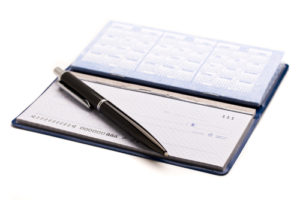Here are two major reports that accountants use to describe the financial status of a business or not-for-profit. These reports also provide a basic framework for understanding common accounting terms.
NOTE: Words in italics are “accountant” words. Don’t let them slow you down. They are here so that you will recognize them if you hear someone else use them. The important thing is that you get the concept behind these words.
 #1. Income Statement = FLOW(THINK CHECKBOOK)
#1. Income Statement = FLOW(THINK CHECKBOOK)
The income statement describes the “Flow” of money in your business. Money comes in and money goes out; hopefully more in than out. A simple way to think about your income statement personally is your checkbook. You fill out deposit tickets and deposit money in the bank. This is income, the funds you receive from customers or clients. You write checks and take money out. These are expenses, the money you spend on business related activities. Your business likely has a checkbook, but it also may have a number of other ways money flows “in” and “out”. All of these would be described by the income statement.
#2. Balance Sheet = POSITION (THINK WALLET)
The balance sheet describes the “Position” of money-related items in your business. You have money in the bank and you own some things; these are “owns” (assets). You may owe money; these would be “owes” (liabilities). A simple way to think about the balance sheet personally is your wallet. What’s in your wallet?
- A debit card: represents amount of money in your checking account.
- Business Card, Driver’s License, Vehicle Registration/Insurance: represent physical assets like home, property, vehicles, etc.
- Credit Cards: represent monies you owe to other people.
Do you have a way that you could describe with confidence to an interested party each of these areas?